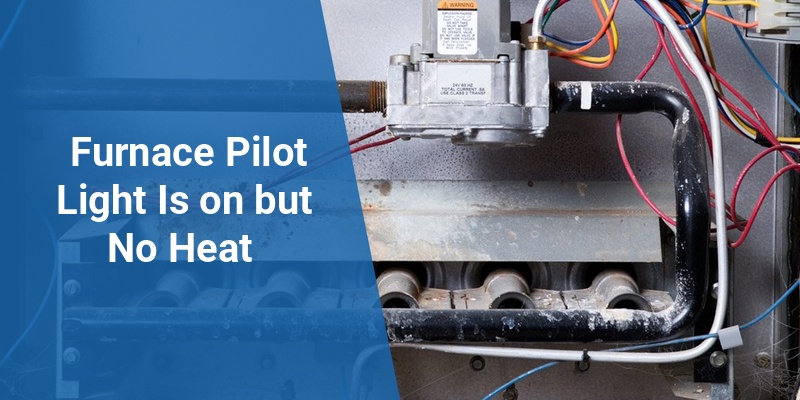When a furnace pilot light is on but there is no heat, it signals potential issues that prevent the furnace from producing warmth despite a lit pilot. This common problem affects many American homeowners, especially during colder months. Understanding the reasons behind a working pilot light without heat is essential for safe and efficient furnace operation. This article explores the potential causes, troubleshooting tips, and professional remedies to restore your heating system effectively.
| Cause | Description | Possible Solution |
|---|---|---|
| Thermocouple Failure | Faulty thermocouple that fails to signal the gas valve to open. | Inspect and replace the thermocouple if damaged. |
| Clogged or Dirty Burner | Accumulation of dirt or debris blocking proper ignition or flame. | Clean burners and pilot assembly thoroughly. |
| Gas Valve Malfunction | Gas valve not opening to supply gas to burners despite pilot light. | Test and replace faulty gas valve parts. |
| Thermostat Issues | Thermostat is not signaling the furnace to heat properly. | Calibrate, repair, or replace the thermostat. |
| Airflow or Blower Problems | Blower motor issues or blocked airflow causing no heat distribution. | Inspect and repair blower motor and clean air filters. |
Common Reasons the Furnace Pilot Light Is On But No Heat
A furnace pilot light ignition ensures the gas valve opens to light the main burners and produce heat. However, a pilot light alone does not guarantee heating. Several issues can prevent heat generation even with a steady pilot flame.
Thermocouple Malfunction: The thermocouple detects the pilot flame and signals the gas valve to open. A defective or misaligned thermocouple may prevent the furnace burners from igniting.
Dirty or Clogged Burners: Dust, soot, or debris can accumulate on the burner assembly, inhibiting flame ignition or maintaining a steady flame.
Gas Valve Problems: If the valve controlling gas flow to the burners fails, it won’t open despite the pilot flame, resulting in no heat.
Faulty Thermostat Settings: Incorrect thermostat settings, wiring issues, or a malfunctioning thermostat can stop the furnace from turning on the burners.
Blower or Airflow Issues: Even if the furnace produces heat, problems with the blower motor or blocked vents can prevent warm air from circulating.
Call 888-906-9139 for Free Local HVAC Quotes – No Obligation, Just Savings!
How the Furnace Pilot Light and Heating System Work Together
The furnace pilot light serves as a small flame that ignites the main burners when heat is requested. The process involves a few key components working in sync:
- Pilot Light: Provides a continuous flame as an ignition source.
- Thermocouple: Detects the pilot flame and signals the gas valve to open.
- Gas Valve: Controls gas flow to main burners after receiving the signal.
- Main Burners: Ignite to heat the air passed over heat exchangers.
- Blower Motor: Circulates heated air through the home’s ductwork and vents.
Any failure along this chain can result in the pilot light burning but no heat being generated or distributed.
Diagnostic Steps to Identify Why Your Furnace Is Not Heating
To troubleshoot a furnace with a pilot light on but no heat, homeowners or technicians should perform systematic checks:
Check the Thermocouple
The thermocouple tips must be positioned properly within the pilot flame. If dirty or bent, it can fail to send the signal to open the main gas valve. Replacing an old or damaged thermocouple often restores function.
Inspect and Clean the Burner Assembly
Remove dust and buildup from burners and pilot orifice using a soft brush or compressed air. A clean burner allows proper gas flow and ignition.
Test the Gas Valve
Using a multimeter, check if the gas valve receives voltage and opens as commanded. A defective valve may require professional replacement.
Review Thermostat Settings and Operation
Ensure the thermostat is set to heat mode and temperature is set above room temperature. Test for loose wires or software glitches in digital thermostats.
Call 888-906-9139 for Free Local HVAC Quotes – No Obligation, Just Savings!
Examine the Blower and Air Filters
A malfunctioning blower motor, a tripped limit switch, or clogged filters can cause warm air not to circulate. Check and correct these airflow issues.
Preventive Maintenance Tips to Avoid Furnace Pilot Light Issues
Routine maintenance improves furnace reliability and reduces incidents of pilot light on but no heat problems. Follow these tips:
- Annual Professional Inspection: Hire HVAC technicians to inspect and tune your furnace before the heating season.
- Regular Cleaning: Clean burners, pilot assembly, and air filters every few months.
- Thermocouple Monitoring: Periodically inspect the thermocouple for wear and replace it proactively.
- Thermostat Calibration: Ensure the thermostat is correctly calibrated and batteries are replaced if applicable.
- Keep Vents Clear: Avoid blocking vents and registers to promote proper airflow.
When to Call a HVAC Professional
If troubleshooting steps fail to restore heat despite an active pilot light, it’s time to call a licensed HVAC technician. Complex issues such as gas valve replacement, faulty wiring, or internal furnace damage require professional diagnosis and repair.
Attempting repairs beyond basic maintenance can pose safety hazards, including gas leaks and fire risks. Always prioritize safety and professional service.
Modern Furnace Alternatives to Pilot Lights
Older furnaces commonly use pilot lights, but many modern heating systems replace this with electronic ignition or hot surface ignition. These systems reduce energy waste and improve reliability by igniting gas only when needed.
Upgrading to a furnace without a standing pilot light can minimize issues like pilot lights burning with no heat and increase overall heating efficiency.
